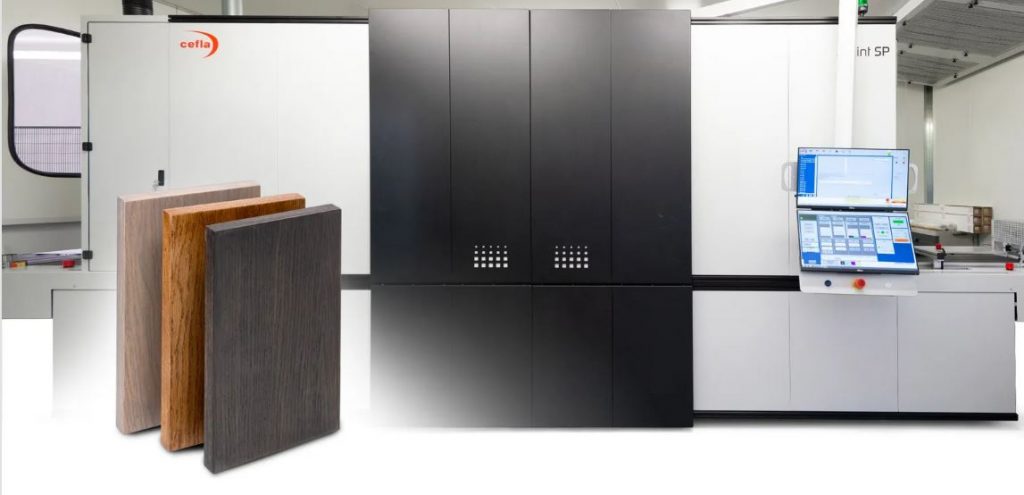Cefla finishing redefines digital printing

Cefla finishing once again advances industrial digital printing technology and and takes designing as well as finishing to the next level. Of all the finishing technologies used in the market today, the fastest-growing is the one responding to current market trends, customised designs, small batches, even one-off pieces, shortest possible time to market. Industrial digital printing is so flexible that it ensures all of these. It also reduces the need for stock, minimises line set-up times and can be used for wood and wood-based materials, ceramics, metal, fibre cement, glass, plastics and so on. And with the Scan to Print technology the user may reproduce an original source pattern, even with tactile effects, ideal as a solution for replacing damaged surfaces.
Endless scope in industrial digital printing:
Industrial digital printing is important in our lives because it plays a pivotal role in decorating the places where we live and work, from wooden floor surfaces, furniture, skirtings and glass to fibre cement, ceramic, plastics and packaging. Today, industrial, decorative and functional printing demand effective mass customisation, and in this regard digital printing offers outstanding advantages.
Catering to market needs
As markets seek for more and more customisation, the opportunities to respond to this demand are easier than before, ensure excellent quality and are economically viable using industrial digital printing technologies.
Digital printing technologies are growing fast and our experience enables us to provide the most advanced solutions available today. This means superb natural looking effects, a realistic textured feel to each surface and even the most lavish customisation can be achieved at competitive costs.
One of the key issues is the need to combine high productivity with low-volume batches, even single pieces.
Along with our in-depth experience in this technology, extensive knowledge of the process and the inks, we can support customers in learning how to prepare the print files, so they can explore potential applications for digital printing in many sectors.
Other than Wood and wood-based materials, Ceramics, Metal, Fibre Cement, Glass, Plastics and Cork, here are a few more specific application areas.
